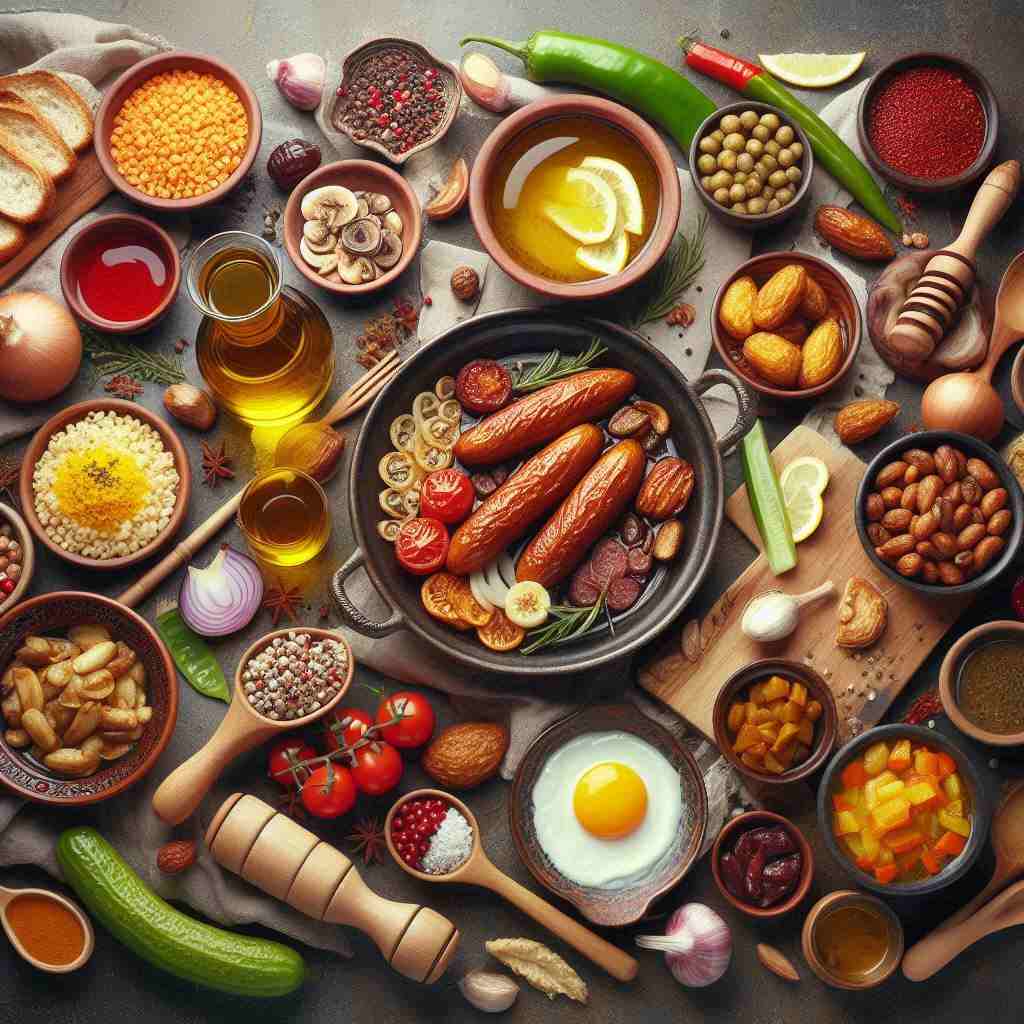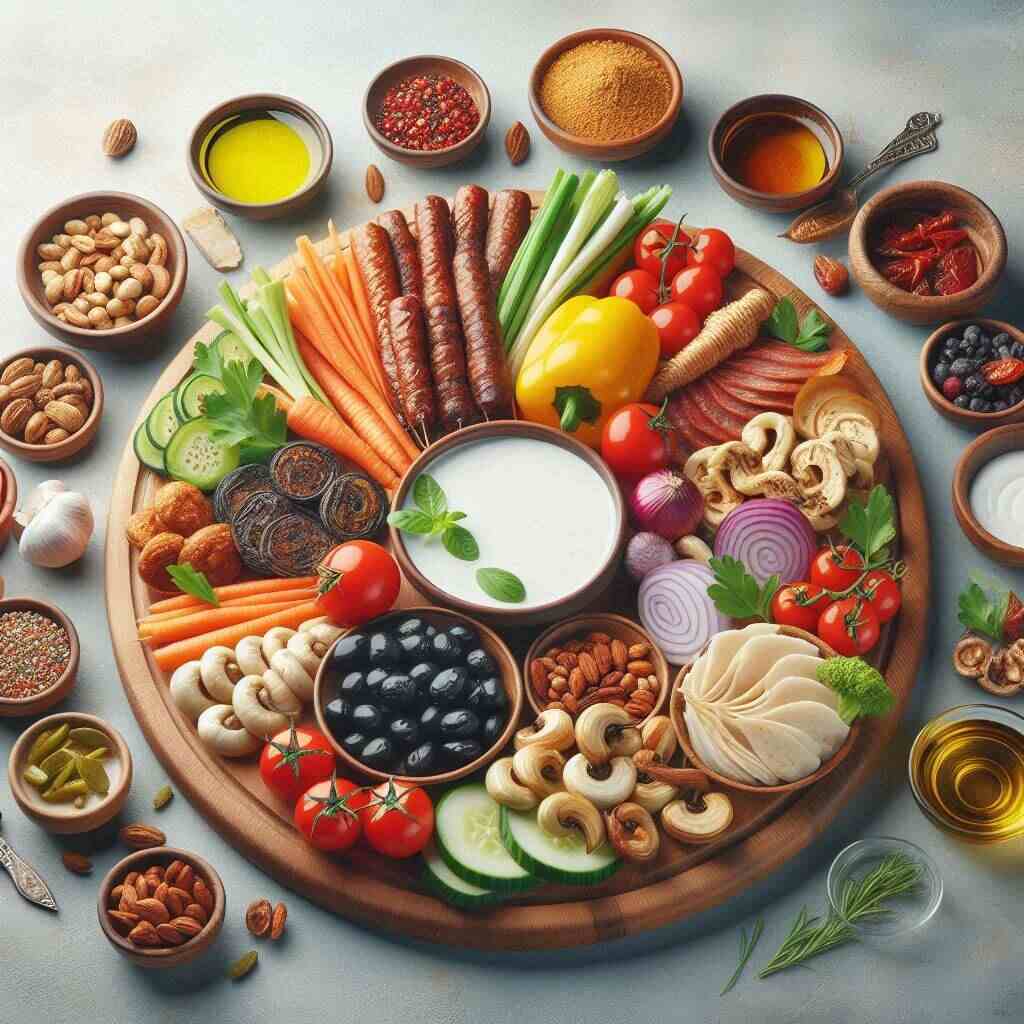Ceıvır: The Complete Guide to the Turkish Culinary Tradition
Introduction: Understanding Ceıvır
Ceıvır is more than a dish; it is a culinary concept rooted in the Turkish verb çevir, meaning “to turn” or “to transform.” In the kitchen, it represents the process of converting simple ingredients into a flavorful, satisfying meal. Flexible, adaptable, and deeply flavorful, Ceıvır embodies the balance of simplicity and depth that Turkish cuisine is known for.

What Ceıvır Means

The Turkish Roots: “çevir” and “çeviri”
The Turkish verb çevir- carries meanings of turning, converting, and translating. The noun çeviri typically refers to translation, but in culinary terms, it reflects the transformation of raw ingredients into a finished dish.
The Role of Orthography
The spelling Ceıvır, featuring a dotless lowercase i, is uncommon in standard Turkish. It is often used for branding, stylized modern references, or transliteration. Variations like ceivir or ceıvir usually refer to the same concept in cooking contexts.
Historical and Cultural Background

Anatolian Origins
Ceıvır stems from Anatolian cooking traditions that prioritize hospitality, stretching limited ingredients, and developing rich flavors. These dishes evolved from the need to create hearty meals using local grains, vegetables, and preserved meats.
Regional Variations
Turkish geography creates distinct regional variations:
- Coastal regions favor olive oil and fresh herbs.
- Southeastern regions use bold spices and slow-cooked meats.
- Central Anatolia emphasizes grains and smoky flavors.
This adaptability allows Ceıvır to reflect local ingredients and tastes.
Core Ingredients of Ceıvır
Proteins
- Lamb: traditional and richly flavored.
- Beef: widely available, hearty substitute.
- Chicken: lighter, quicker-cooking option.
- Plant proteins: lentils, chickpeas, or textured soy for vegetarian versions.
Grains and Fillers
- Bulgur: provides chewiness and absorbs juices.
- Rice: creates a soft, silky base.
- Cracked wheat: requires hydration but adds texture.
Vegetables, Herbs, and Aromatics
- Tomatoes, onions, garlic, bell peppers, root vegetables.
- Fresh herbs: parsley, dill, mint.
- Roasted vegetables like eggplant and peppers for deeper flavors.
Spices and Fats
- Core spices: cumin, paprika, pul biber, black pepper, salt.
- Fats: olive oil or butter, depending on regional preference.
Cooking Techniques for Ceıvır
Braising, Roasting, and Skillet Finishing
- Slow braise: deep flavor, tender meat, and infused grains.
- Spit-roast: caramelized exterior, juicy interior.
- Skillet finish: sear first, then finish in the oven for home-friendly results.
Layering Flavor
- Sear the protein.
- Deglaze the pan to lift fond.
- Add aromatics and grains later for proper texture.
Texture Control
- Bulgur: toast briefly and simmer.
- Rice: rinse and steam for fluffiness.
- Cracked wheat: pre-soak for softer consistency.
Step-by-Step Ceıvır Recipe
Ingredients (Serves 4–6)
- 1.5–2 lb boneless lamb shoulder or beef chuck
- 1½ cups bulgur or long-grain rice
- 2 medium onions, finely chopped
- 3 garlic cloves, minced
- 2 medium tomatoes, diced
- 2 bell peppers, diced
- 2 tbsp tomato paste
- 1½ cups stock
- 1 tsp cumin, 1 tsp paprika, ½ tsp pul biber, ½ tsp black pepper, 1 tsp salt
- 3 tbsp olive oil or 2 tbsp butter + 1 tbsp oil
- Fresh parsley, chopped
- Lemon wedges
Preparation Steps
- Brown the protein: Salt meat and sear until crusted. Remove.
- Cook aromatics: Sauté onions, garlic, and tomato paste. Add tomatoes and peppers.
- Deglaze: Add a splash of stock, scraping up browned bits.
- Return meat and spices: Mix in cumin, paprika, and pepper.
- Add grains and stock: Combine bulgur or rice with stock.
- Simmer gently: Cover and cook 35–45 minutes until tender.
- Finish: Rest for 10 minutes, fluff grains, add parsley, and squeeze lemon.
Serving Tips
Serve on a platter or individual bowls. Garnish with toasted nuts, olive oil, and fresh herbs. Pair with yogurt or bread.
Variations and Modern Twists
Vegetarian and Vegan Options
Use roasted eggplant, mushrooms, lentils, or chickpeas. Add tahini or nuts for richness.
Regional Spins
- Aegean: more olive oil, lemon, fresh herbs.
- Black Sea: include cornmeal or maize-adjacent grains.
- Southeastern: stronger spices, possible use of pomegranate molasses.
Fusion Ideas
Combine global ingredients: quinoa, arborio rice, or international spices. Maintain the layering technique for flavor.
Pairings and Complements
Breads
- Lavash or yufka for wraps.
- Crusty bread to mop up juices.
- Simit for textural contrast.
Salads and Meze
- Shepherd’s salad, pickles, tzatziki, roasted peppers.
- Fresh herbs and citrus brighten flavors.
Beverages
- Light red wines for lamb or beef.
- Ayran (yogurt drink) for traditional pairing.
- Black tea after the meal for digestion.
Meal Planning and Batch Cooking
- Double ingredients for large groups.
- Oven-finish at 320°F for consistent low-and-slow cooking.
- Freeze portions and reheat gently; refresh with herbs and lemon.
Nutrition and Dietary Notes
- High in protein and carbohydrates; fats depend on oil or butter use.
- Common allergens: wheat, gluten, nuts (optional).
- Lighten with more vegetables and less fat; increase protein with legumes or yogurt.
Ingredient Sourcing and Substitutions
- Specialty markets or online stores for bulgur, pul biber, and tomato paste.
- Substitutions: long-grain rice for bulgur, smoked paprika for Aleppo pepper, Greek yogurt for Turkish yogurt.
Common Mistakes
- Overcooking meat: cook at low heat and test for tenderness.
- Soggy grains: measure liquids accurately, avoid excessive stirring.
- Flat flavor: add acid (lemon), reduce tomato paste, or toast spices to enhance aroma.
Ceıvır in Restaurants
- Presentation varies: rustic platters or composed bowls.
- Portion size and protein choice influence price.
- Restaurants highlight provenance and ingredient quality.
Why Ceıvır Works for Home Cooks
- Hands-off techniques save time.
- Ingredient simplicity yields deep flavor.
- Adaptable to different diets and pantry availability.
Conclusion
Ceıvır exemplifies the principle of transforming simple ingredients into a complex, flavorful meal. Its adaptability, regional diversity, and layering technique make it a reliable and versatile dish for home cooks and professional kitchens alike. By mastering searing, simmering, and flavor layering, anyone can bring the essence of Turkish culinary tradition to their table.
Frequently Asked Questions
Q1: Is Ceıvır a fixed recipe?
A1: No, it refers to a concept of transformation in cooking and can vary widely.
Q2: Can I use rice instead of bulgur?
A2: Yes, adjust water ratios; rice yields a softer texture.
Q3: Is Ceıvır always meat-based?
A3: No, it can be made vegetarian or vegan with legumes and vegetables.
Q4: What are the essential spices?
A4: Cumin, paprika, pul biber, black pepper, and salt.
Q5: How to prevent mushy grains?
A5: Use correct liquid amounts and allow resting off heat.
Q6: Can Ceıvır be made ahead?
A6: Yes, reheat gently and add fresh herbs and lemon before serving.
Q7: Best meat cuts for Ceıvır?
A7: Shoulder cuts for lamb or beef; tenderize with slow cooking.
Q8: What traditional sides go with Ceıvır?
A8: Fresh salads, yogurt, pickles, and flatbreads.
Q9: How to make it more Mediterranean?
A9: Add herbs, citrus, and lighter olive oil-based seasonings.
Q10: What does the name Ceıvır mean?
A10: It comes from the Turkish root çevir, meaning to turn or transform.







